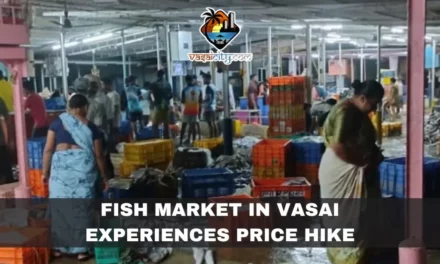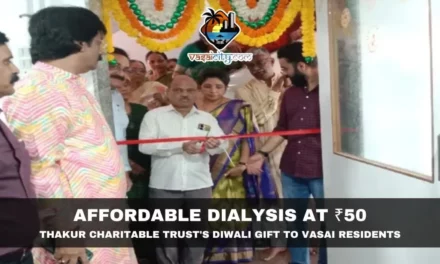In a proactive move to tackle the growing concerns of unauthorized hawkers and encroachments in Vasai-Virar city, the Municipal Corporation has decided to conduct a comprehensive survey of hawkers. The survey, assigned to a specialized company, is set to be completed within two months, aiming to identify hawker locations and alleviate congestion issues on the streets.
The burgeoning population in Vasai-Virar has led to an exponential increase in the number of hawkers, who have occupied spaces across the city to set up their stalls. The influx of hawkers, particularly in markets operating outside regulatory frameworks, has given rise to problems such as traffic congestion, uncleanliness, the spread of diseases, and pollution. Additionally, poorly maintained roads and footpaths have raised concerns among the general public, making it difficult for citizens to navigate the city.
Addressing these challenges becomes more complex as the initial survey, conducted when there were approximately 12,000 to 15,000 hawkers, now needs updating due to the continuous influx. The Municipal Corporation plans to undertake a fresh survey of hawkers, ensuring that the allocation of hawker spaces is well-defined. The authorities assure citizens that the survey will not only designate hawker zones but also provide reassurance regarding traffic flow and pedestrian ease.
To streamline the process, Municipal Commissioner Anil Kumar Pawar stated that the survey would be conducted online, with completion expected within two months. Following the survey, hawkers will be assigned specific areas, and all necessary documentation, including permits and registration certificates, will be thoroughly scrutinized.
In addition to addressing hawker-related issues, the Municipal Corporation has undertaken initiatives to support small businesses affected during the COVID-19 crisis. Under the Prime Minister’s Swanidhi scheme, 24,000 street vendors were provided with loans at low-interest rates. The repayment structure allows businesses to repay the loans in installments, with vendors eligible for additional loans ranging from 20,000 to 50,000, fostering economic recovery in the city. The distribution of these loans is facilitated through 45 nationalized, multistate, and cooperative banks.
Another aspect of the Municipal Corporation’s approach is to avoid penalizing hawkers from rural areas who come to the city to sell a variety of goods, often procured through hard work. Instead, officials aim to educate these vendors about the rules and regulations, ensuring that they adhere to guidelines without incurring losses. Awareness programs will focus on guiding vendors away from setting up stalls on roadsides and encouraging them to occupy designated areas.
The Municipal Corporation’s efforts align with the broader vision of a developed India, as Commissioner Pawar revealed that more than 24,000 beneficiaries have availed themselves of the benefits of the scheme to date.
As the city continues to grow, the Municipal Corporation is committed to finding pragmatic solutions to ensure that the streets remain accessible and free from unauthorized encroachments. The ongoing efforts underscore the importance of collaborative initiatives to address urban challenges while supporting the livelihoods of small-scale vendors.














